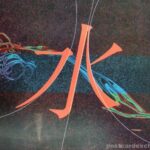Starting a postcard collection is one of the most rewarding hobbies I’ve ever pursued. There’s something magical about holding a piece of history in your hands—whether it’s a faded vintage card depicting a long-forgotten monument or a modern artistic creation from a distant country. Every postcard tells a story, and that’s what drew me into this passion in the first place. If you’re thinking about beginning your own collection, you’re about to embark on an incredible journey that connects you with history, art, and collectors from around the world.
Step 1: Define Your Collecting Focus
The first crucial decision when starting your postcard collection is determining what you’ll actually collect. The beauty of postcard collecting is that there’s virtually no limit to what you can focus on. I can’t stress this enough—having a clear focus makes collecting infinitely more enjoyable and rewarding.?
You might decide to collect postcards from a particular location or country, which is perfect if you’re passionate about geography or travel. Maybe you’re drawn to postcards from a specific era, like the vibrant chromolithographs of the early 1900s or the bold mid-century modern designs of the 1950s. Other collectors focus on themes—animals like cats or birds, architectural landmarks, natural wonders, or even niche subjects like lighthouses or abandoned train stations.?
Some of the most passionate collectors I know focus on postcards by particular artists, which requires research but yields incredibly satisfying results. You could also collect humorous postcards, holiday cards, or postcards featuring specific artwork from museum collections. The key is choosing something that genuinely excites you, because you’ll be spending considerable time and resources hunting down those perfect additions to your collection.?
Step 2: Research Before You Buy
Before spending money on postcards, do your homework. Understanding the history and diversity of postcard designs will transform you from a casual buyer into a knowledgeable collector. Take time to explore different styles, eras, and the stories behind them. Visit antique shops, browse online databases, and read about postcard production techniques through the decades.?
This research phase taught me how to recognize valuable cards from damaged ones. Pay attention to the condition of postcards—look for minimal creases, stains, or yellowing. A postcard that’s clean and well-preserved will always be more desirable than a heavily damaged example. Additionally, understanding the historical significance and unique characteristics of cards in your chosen focus area will help you spot genuine treasures when you find them.?
Step 3: Find Your Sources
There are numerous places where you can acquire postcards to start building your collection. Antique stores and flea markets are goldmines—I’ve spent countless hours digging through boxes at these venues. Garage sales and yard sales can yield unexpected finds at bargain prices. Secondhand bookstores often have collections tucked away, and auction houses occasionally offer postcards, sometimes in bulk lots that are perfect for beginners.?
For vintage postcards specifically, online platforms have made collecting more accessible than ever. You’ll find established dealers with curated selections, though prices tend to reflect the quality and rarity of their stock. One advantage of online shopping is that you can research cards before purchasing and connect with sellers who specialize in your area of interest.
If you’re just getting started, I’d recommend buying bulk lots of postcards. Even though you might not keep every card, the sheer variety will spark ideas and help you refine your collecting preferences.?
Step 4: Join the Global Postcard Exchange Community
This is where postcard collecting becomes truly special—joining the worldwide community of collectors through postcard exchange platforms. Postcrossing is the most popular postcard exchange site, founded in 2005 with over 805,000 members across more than 210 countries and territories. The concept is beautifully simple: send a postcard to a randomly assigned member, and you’ll receive one from another random member somewhere in the world.?
A postcard exchange through Postcrossing is free to join and requires no special equipment. You simply create an account, add your postal details, request addresses from other members, send physical postcards with unique ID numbers, and receive postcards from across the globe. As your experience grows, your sending limits increase, eventually allowing up to 100 postcards in transit at once.?
Beyond Postcrossing, there are other excellent postcard exchange platforms. PostcardHub specializes in themed swaps, allowing you to exchange artistic, vintage, or regionally-specific cards. Swap-bot offers postcard exchanges alongside other collectibles, with structured swaps and user feedback systems. These platforms create meaningful connections with fellow enthusiasts, and many collectors arrange direct swaps with members they connect with—sending cards to specific people rather than randomly assigned addresses.?
The beauty of participating in a postcard exchange is that you’re not just collecting; you’re contributing to a global community. You’re learning about different cultures, sharing pieces of your own heritage, and building relationships with people you’d never otherwise meet.?
Step 5: Connect With Local Collecting Communities
While online postcard exchange is fantastic, don’t overlook the value of connecting with collectors in your own region. Many areas have active postcard clubs where enthusiasts gather to buy, sell, and trade cards. These communities are remarkably welcoming and non-competitive—collectors genuinely enjoy helping each other find cards for their specific collections.?
Attending postcard trade shows and expos is an invaluable experience. These events bring together serious collectors and dealers from across the region, offering an incredible variety of postcards and the chance to network with people who share your passion. Local collecting groups will often alert each other when special cards become available, so joining these communities means you’ll have fellow hunters helping you track down those elusive pieces.?
Step 6: Organize and Store Your Collection Properly
Once your postcard collection begins to grow, proper storage becomes essential. I’ve learned this the hard way—improper storage can damage valuable cards. There are several excellent storage methods to consider.?
Loose-leaf albums with see-through pockets are fantastic if you enjoy regularly viewing your collection and showing cards to others. These albums allow you to examine postcards front and back without handling or damaging them. Using separate albums for different topics or time periods adds organizational clarity to your collection.?
For larger collections, moisture-resistant containers divided into labeled sections work well, though each card should be stored in its own plastic sleeve of archivally stable plastic. This method protects cards from bending and damage while accommodating substantial quantities. Some collectors use specialized collection software to catalog and digitally organize their postcards, which provides both accessibility and backup security.??
Whatever storage method you choose, keep cards in a climate-controlled environment away from direct sunlight, extreme temperature fluctuations, and high humidity. If you include notes with your cards, write on sticky tags attached to the protective sleeve rather than on the card itself.?
Step 7: Start Small and Let Your Collection Evolve
My best advice for beginners is to start small and give your collection time to develop naturally. You don’t need hundreds of postcards to be a legitimate collector. Begin with cards that genuinely appeal to you, whether that’s ten postcards from a single country or twenty cards featuring vintage trains.?
As you participate in postcard exchanges, attend collector meetings, and visit dealers, your preferences will naturally refine. You might discover unexpected interests or develop deeper appreciation for certain styles. Your collection is a personal expression of your interests and history, so allow it to grow organically.
The postcard exchange process itself often brings surprises—receiving an unexpected card from a distant country can redirect your entire collecting focus in wonderfully unexpected ways. That’s part of the magic. Embrace the journey, connect with fellow collectors through postcard exchange platforms and local communities, and most importantly, enjoy the hunt. This hobby has brought me tremendous joy and opened doors to friendships and knowledge I never anticipated.






